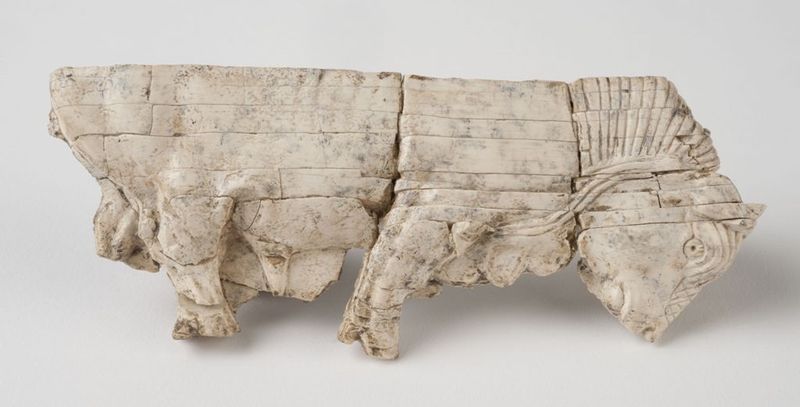Nimrud (Ancient Kalhu)
Phoenician ivory of bull with lowered head, 9th to 7th centuries BCE
The Phoenician ivory carving of a bull with a lowered head, discovered during the excavation of Fort Shalmaneser at Nimrud, is a notable example of Assyrian artistic interaction with other cultures. The ivory used dates to the 9th century BC and was likely looted by the Assyrians as military tribute from regions such as Syria and Phoenicia.
- Artist / Maker
- Nimrud (Ancient Kalhu), Mesopotamia (Modern Iraq)
- Creation Date
- 9th to 7th centuries BCE
- Place created
- Iraq - Nimrud
- Collection
- University Art Collection
- Subjects
- Classics and archaeology - sculpture
- Materials used
- ivory
- Dimensions
(H x W x D) - 4.4 x 11.2 x 0.95 cm
- Credit line
- Classics and Archaeology Collection, the University of Melbourne Art Collection.
- Accession number
- 0000.0423.000.000
- Copyright
- Public domain. For image enquiries contact the Museums and Collections Department, Potter Museum of Art. Request Access

